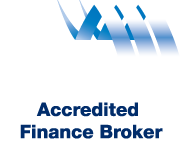Interest rates are at historic lows, and with talk of a further cuts, we are hearing from many who are now thinking of either finally getting a foot on the property ladder, or investing in another property. But this thought is always followed by: how much can I borrow?
Depending on who you talk to, banks or lenders frequently talk about borrowing capacity. Borrowing capacity is also known as borrowing power, serviceability etc.
It’s sensible to determine your borrowing capacity upfront as this provides a guide to the type of property you can buy. Your borrowing capacity is the amount a lender will lend you to buy a property but it’s not as simple as it sounds. There are many factors involved in determining the amount they come up with, but they all serve to prevent people from borrowing more than they can afford to repay.
The loan amount offered can vary between lenders because they rely on a number of factors to calculate it. Some of these are your income, expenses, liabilities. Liabilities are you credit card limits, car loans, personal loans, hire purchases or carsds issued to purchase white goods from suppliers such as Harvey Norman or JB Hi-Fi. Income and the type of income is a key factor; for example, if you are a full-time or casual employee, business owner, or contractor – the size of the loan compared to the value of the property, and the number of dependents you have all eventually assist with understanding borrowing capacity.
Unsecured debts such as personal loans and credit cards can also limit the amount you can borrow. This is because the short repayment terms they have equates to high monthly repayments. Consolidating your debt into one loan, such as a home loan if you have one, can help, although be aware this can extend your debt over the life of your home loan.
Managing your credit cards is a key factor in enhancing your borrowing capacity. Lenders assess your ability to repay a mortgage on the basis that any credit card you own will be fully drawn. If you have a number of credit cards it may be sensible to cancel all but one as lenders view them as a future liability – even if you don’t owe any money on them. Alternatively, if you can’t live with just one, reduce the credit limits on them.
Lenders have to operate under regulatory guidelines designed to encourage responsible lending, and the current National Credit Consumer Protection Act (2009) places a great deal of emphasis on preventing situations in which a borrower could not repay or could only repay a loan with substantial hardship.
This legislation, as well as a lender’s unwillingness to provide funds to borrowers who may be unable to repay the loan, protects you from being offered a loan that you haven’t a hope of repaying. But it is a smart move to take action first to ensure you can make your repayments without getting into trouble.
There are a number of borrowing calculators to be found on lenders’ websites that can help with assessing your borrowing capacity. It is always better to talk to a broker who have access to more lenders than going direct to one bank as that bank may only have access to their own borrowing capacity calculators.
These calculators provide only a rough guide to how much you can borrow but are handy because you can adjust the interest rate payable on the loan to give you an idea of how much extra you’d have to pay if rates rose.
And remember, while being able to optimise your borrowing capacity will give you more options about the type of property you can purchase, once you have bought your property, it doesn’t mean you don’t have to worry anymore.
Once you have a mortgage, make sure you keep on top of all your other living expenses so you know what your financial position is. If rates rise, you may find yourself needing to make cuts to your budget and it’s better to be prepared.
Factors affecting your borrowing capacity
Your income and any financial dependants that you have affect your borrowing capacity. Other factors that affect your capacity are:
- Your credit history. Your credit history plays a huge role in determining your borrowing capacity. If you can prove that you are a reliable and responsible borrower who meets their financial obligation on time, you may be able to borrow a higher amount. However, if your credit history is tarnished by missed bills and credit card payments, it may work against you.
Before going to a lender, get a copy of your credit history and see if there are any problems you can address before looking for financing. You may get a credit report for free using the national credit reporting bodies (CRBs) such as Equifax Australia, Experian, and illion.
To get your credit report history, you may need to provide your full name, address, date of birth, previous address, and/or driver’s license number.
- Your expenses. Most banks wishes to understand your Basic Living Expenses as well as Discretionary Living Expenses. Basic Living Expenses may include Clothing, personal care, groceries, transport, owner occupied property expenses (rates and utilities) and other basic living expenses. Discretionary Living Expenses may include childcare, education, insurances, medical and health, recitational entertainment, telephone, internet pay TV and other discretionary expenses. A lender will take this into account when assessing your borrowing capacity. Once you know your borrowing capacity, it may be a good idea to take a closer look at your living expenses to see how repayments will fit in.
Make sure to calculate your living expenses before filing a loan application as lenders will take all your expenses into account. To evaluate your living expenses, you may use the Household Expenditure Measure (HEM).
HEM is developed by the Melbourne Institute and is the standard benchmark lenders use to estimate your annual expenses. The figure may become part of a lender’s calculation when assessing your borrowing capacity. It uses a median expenditure on basic expenses (e.g. food, children’s clothing) combined with 25% of spending on “discretionary” expenses (e.g. eating out, childcare, alcohol). Non-basics like vacations are excluded from the calculation.
You may also use budget planer from ASIC Money Smart site to have a rough idea of where your money is going every month.
- Your records. Your financial records like your salary slips will play an important role calculating your borrowing capacity. These records support your application with proofs of any bonuses or overtime pay you regularly receive. Your records may also include rental and other income from investments; all of which be useful to calculate the assessment of your borrowing capacity.
A checklist to organise all documents you may need to submit to your lender may be helpful. Here are documents you may need, transformed into a sample checklist:
- Most
recent payslips (PAYG employment)
- Most recent PAYG Summary from MyGov
- Last 2 years Tax Returns and Notice of Assessment
- Bank Statements over the last 6 months
- Identification (drivers licence and passport etc)
- The type of loan you want. The type of loan you are applying for vastly affect the amount you can borrow. Lenders generally determine your repayment capacity at an interest rate that is approximately 2.5% to 3.0% higher than the rate at which the loan is offered. However, if you’re applying for a fixed-rate loan, the repayment capacity may be assessed without any buffer.
You may consider consulting an expert, such as a mortgage broker, who may be able to help you find a loan that fits your financial situation. A broker has access to a range of home loan products through a panel of lenders he or she is accredited with.
- Your deposit. The amount of your deposit may not directly impact your borrowing capacity, it may assist to save you money on expenses such as Lenders Mortgage Insurance (LMI). Lenders all have varying criteria for assessing your capacity and allowing you to use a certain amount for your deposit. The larger the amount you have saved for a deposit, the easier it may be to obtain financing.
Lenders like to see that you can save money over some time. Generally, most lenders require a 5% “genuine savings” for your deposit. Saving a larger deposit can help you. It will also show lenders that you are capable to save for your loan.
Some of the steps you may consider taking to save more for your deposit are:
- Reduce your debts. Paying off your debts may help you save for a deposit faster. Consider paying off high-interest debts such as credit cards so you may be able to keep a little more for your deposit.
- Cut your expenses. You may trim your expenses by preparing food at home more frequently instead of eating out, or try cutting back on movie dates. The money you save from doing these changes may go to your home deposit fund instead.
- Find a second source of income. Making a bit of extra cash on the side may help you save for a deposit a lot faster. For example, consider some of your hobbies and see if you can make a profit out of them.
If you are looking to buy a home to live in or as an investment property, you should always consider your borrowing capacity. By having a clue of what you can borrow, you can adjust your expectations and narrow your searches. Consult a professional to give you pointers on how you can increase your borrowing capacity. This article is general and has not taken into account your objectives, financial situation, or needs. Consider whether any advice is right for you. You may need financial advice from a qualified adviser. Consider the product disclosure statement (PDS) before making any financial decision. For more information.


